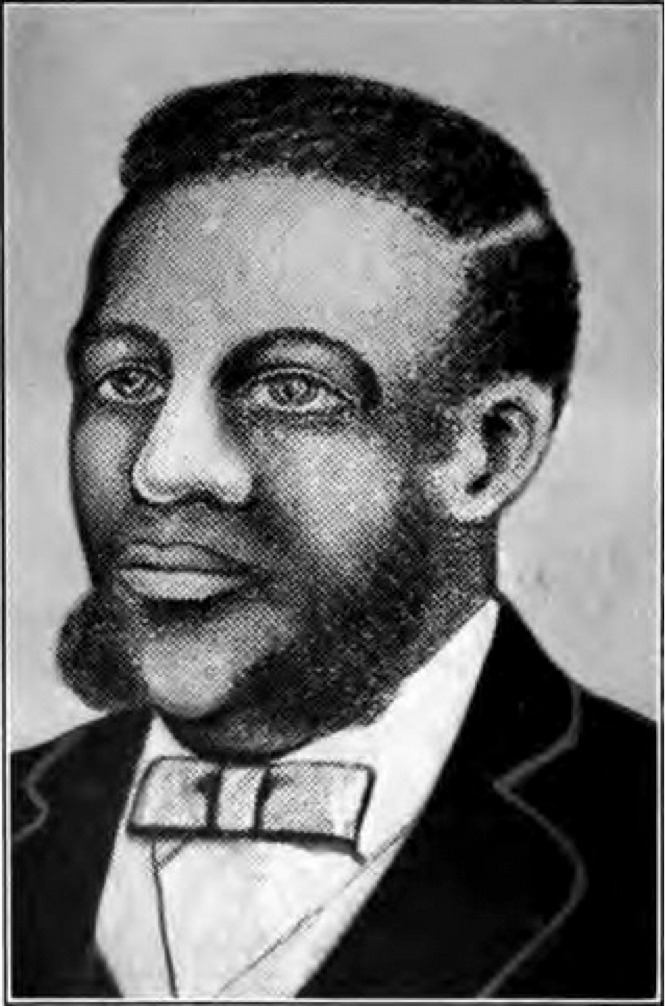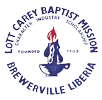history
History of the Lott Carey Baptist Mission School
Lott Carey Baptist Mission School is located nine miles east of Monrovia, in the City of Brewerville, Liberia, West Africa. This K through 12th grade institution of learning is named to honor the first African-American Baptist missionary from the United States, Rev. Lott Carey. Rev. Carey purchased his freedom in 1813, moved to Liberia in 1821, and established Liberia’s first Baptist church, the Providence Baptist Church.
The Lott Carey Foreign Mission Convention, USA, through the efforts of African-American pastors and church leaders committed to the support of foreign missions in Africa; established Lott Carey Mission School in 1908. The foreign Mission Convention, USA has been its major source of support and has sponsored over 25 foreign missionaries, including Superintendents, Principals, Teachers and Nurses .
The Lott Carey Convention started from Shiloh Baptist Church, Washington, DC. Rev. J. O. Hayes, Sr. a native of North Carolina affiliated himself with the Lott Carey Convention immediately after its founding in 1897, and became the convention’s first missionary to Liberia. Before his affiliation with the Lott Carey Convention, Hayes had labored in Liberia under the auspices of the Baptist Foreign Mission Convention since 1881. In 1902, Rev. J. O. Hayes operated an industrial school for the training of children mainly boys. The Missionary work of the convention extended beyond the establishment of a church in Brewerville. In 1908 the Lott Carey Convention sent the Reverend and Mrs. William Henry Thomas to work in Brewerville, Liberia. Mrs. Cora Ann Pair Thomas worked faithfully with her husband until she died. Reverend William Henry Thomas and his wife Cora Thomas (a native of Raleigh, North Carolina, USA) were the first missionaries sent to Brewerville by the Foreign Mission Convention to establish the Lott Carey Baptist Mission School to provide a Christian based education built on the foundation of: Character, Industry and Scholarship. With the assistance of Rev. J. Oliver Hayes, Sr., a native of North Carolina and pastor of Zion Grove Baptist Church, in Brewerville; Lott Carey Mission began as a day school for boys in the Zion Grove Baptist Church. Classes were held from the First through Eighth grades. The first graduates were the late Harmon Carey Thomas, Jesse Hayes and Isaac Woods. Zion Grove and Salem Baptist Churches in Brewerville purchased the present site that Lott Carey Baptist Mission occupies. The first building erected on Campus was “The Chapel” in 1914. The upstairs was used as the girls’ dormitory while the downstairs was used for classes and vesper services.
Thomas extended the mission of the Lott Carey Convention into a pioneer phase in Liberia – Journalism. He operated the only printing press among the Negro Baptist in Liberia. The intelligence of Liberia was greatly enhanced by the “watchman”, a monthly newspaper which was organized in 1909, was instrumental in expanding the Lott Carey Convention. The Alexander Chapel was completed and used as a church, Sunday school, and day school now called “LOTT CAREY BAPTIST MISSION SCHOOL”, Brewerville, Liberia. The expansion of the mission of Lott Carey projects in Liberia evolved slowly. Besides the work in Brewerville, the convention established a station in Careysburg, Liberia. In these two cities the Convention established the following missions: Kia Poo Mission, Brewerville; C. S. Brown Mission, Careysburg; and the Alexander Mission in Brewerville. Each station began in response to specific needs.
Through the years, the Lott Carey Convention has directed much of its resources to make the Brewerville Station productive in the cause of World Mission. This station was recognized in1933 as one of the strongest and best-equipped missionary centers in Liberia. The primary emphasis of the Brewerville station was academic work, evangelism and home economics. Moreover, in 1948, the Brewerville station (Lott Carey Baptist Mission School) became one of Liberia’s five fully accredited high schools.
Lott Carey Mission has been a pioneer in providing Liberia with educated leadership in the fields of religion, education, government services, medicine, among others. Among the most prominent leaders who graduated from the Lott Carey Mission School in Brewerville are Hon. Angie Brooks-Randall, President of the General Assembly of the United Nations (1969); Her excellency Eugenia Stevenson, Counsel General of New York and Ambassador to the United States of America; Hon David Thomas, Former Ambassador to the Cameroons, and Cllr Joseph W. Garber, Former Attorney General of Liberia. Other prominent leaders include Hon. Judge Luvenia Ash-Thompson, Hon. Kartumu Y. Boakai, former Second Lady of Liberia, the late Hon. Ambulai Johnson, Amb. Timothy Thomas, Cllr. Pearl Brown Bull, Hon Chris Massaquoi, the late Rev. Dr. Jeremiah W. Walker, to name a few.
Prior to the 1990 civil war in Liberia, Lott Carey Baptist Mission was a co-educational day and boarding school accepting girls and boys from all geographic areas of Liberia. In the 1960’s, students from other countries in West, Southwest, and South Africa came to Lott Carey. Many of these students, including Liberian boys and girls were accepted into the school’s Beneficiary Program. The Program provided their tuition, room and board and covered fees. The Lott Carey Foreign Mission Convention extended to a few of these students, the opportunity to attend college in the United States. Many of the students returned and made meaningful contributions to both Lott Carey and the economic and educational development of Liberia.
In all, graduates of Lott Carey are doctors, lawyers and scientists and they continue to hold prominent positions in corporations, commerce, industry, government and in the religious sector in Liberia and throughout the world. The school remains dedicated to its professional and educational commitments to its students. It is this tradition that the alumni association pledges to uphold and support.
The Lott Carey Baptist Mission sub-station is situated in Bambu Town, Bopolu District, Gbarpolu County, some sixty-two (62) miles from Brewerville City. In 1960, an agreement was signed between the tribal people led by the late Paramount chief, Bambu, of Bopolu Chiefdom, and the Lott Carey Convention with the understanding that the local authorities would give 1500 acres of land to the convention to administer its mission work. Then, the Convention recompense would educate the children of Bopolu Chiefdom. Mr. Oscar B. Johnson, a graduate of the Lott Carey Baptist Mission School in Brewerville was sent to construct a four (4) classroom building and clear a portion of the land for agriculture. The building was completed in 1964 and Mrs Gladys Branch was assigned to the school as a teacher. Among few students from Bambu Town school who enrolled in Lott Carey Mission, Brewerville, were Charles Smith, Varfey Bambu, Isaac Varmah, Willie Karmoh, Varney Johnson and others.
Through the years, the Lott Carey Baptist Mission School has made its vital presence known in Liberia. Since Liberia is its oldest mission field, Liberian mission stations have received special attention from the Convention. In 1972-76, the Convention adopted an Executive Board recommendation which approved the contractual agreement negotiated by Dr. Wendell Summerville, Executive Secretary-Treasurer then, for the construction of buildings on the campus. The projects included teachers, college, modern water system, an extension of the girls dormitory, renovation of the chapel, building and furnishings of a library, home economics, complex building, boys dormitory, teachers quarters, and administrative building. Unfortunately, 80% of the campus facilities were devastated and destroyed as a result of the Liberian Civil war.
Brief History
Brief History of the Lott Carey Baptist Mission School

Lott Cary (also in records as Lott Carey and Lott Gary) (1780 – November 10, 1828) was an African-American Baptist minister and lay physician who was a missionary leader in the founding of the colony of Liberia on the west coast of Africa in the 1820s.
